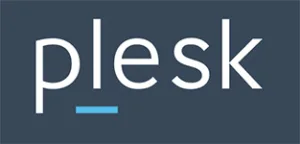The documentation for the Plesk API* gives the following cURL function.
function curlInit($host, $login, $password)
{
$curl = curl_init();
curl_setopt($curl, CURLOPT_URL, "https://{$host}:8443/enterprise/control/agent.php");
curl_setopt($curl, CURLOPT_RETURNTRANSFER, true);
curl_setopt($curl, CURLOPT_POST, true);
curl_setopt($curl, CURLOPT_SSL_VERIFYPEER, false);
curl_setopt($curl, CURLOPT_SSL_VERIFYHOST, false);
curl_setopt($curl, CURLOPT_HTTPHEADER,
array("HTTP_AUTH_LOGIN: {$login}",
"HTTP_AUTH_PASSWD: {$password}",
"HTTP_PRETTY_PRINT: TRUE",
"Content-Type: text/xml")
);
return $curl;
}
I have a couple of questions.
-
I have never, anywhere else, seen HTTP headers with underscores in them. Is this an error in the documentation?
-
What on Earth is
HTTP_PRETTY_PRINT? Searching for this just brings me back to Plesk documentation. I can’t see it anywhere else. -
What’s the deal with using
HTTP_AUTH_LOGINandHTTP_AUTH_PASSWDinstead ofCURLOPT_USERPWD?
Incidentally, whatever options I try, I’m getting the following response from Plesk.
HTTP/1.1 404 Not Found
X-UA-Compatible: IE=EmulateIE7
Content-Type: text/html
Content-Length: 345
Date: Wed, 27 Jun 2012 14:58:15 GMT
Server: sw-cp-server
<?xml version="1.0" encoding="iso-8859-1"?>
<!DOCTYPE html PUBLIC "-//W3C//DTD XHTML 1.0 Transitional//EN"
"http://www.w3.org/TR/xhtml1/DTD/xhtml1-transitional.dtd">
<html xmlns="http://www.w3.org/1999/xhtml" xml:lang="en" lang="en">
<head>
<title>404 - Not Found</title>
</head>
<body>
<h1>404 - Not Found</h1>
</body>
</html>
* Parallels Plesk Panel 9.5:: API RPC Protocol Developer Guide > Client Code Samples > PHP Client Application

 Question posted in
Question posted in 

2
Answers
HTTP_AUTH_LOGINheader contains the panel user login name. TheHTTP_AUTH_PASSWDheader contains the panel user password.CURLOPT_USERPWDis not required.Try using these options:
For point 4:
404 would mean the file
.../enterprise/control/agent.phphas been removed from the server. Many were doing it few months ago to protect from security vulnerability before the patch has been shipped. I would recommend to check/usr/local/psa/admin/logs/httpsd_access_logfile for errors and also availability of/usr/local/psa/admin/htdocs/enterprise/control/agent.php